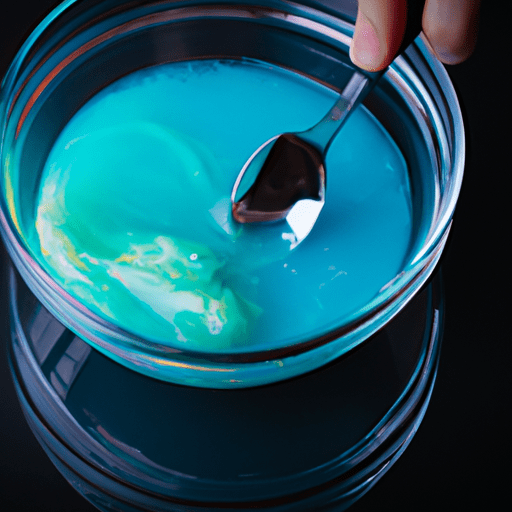The Fascinating World of Blue Food Colouring
Food is not just about taste; it’s also about visual appeal. Sometimes, a pop of color can elevate a dish and make it even more enticing. Blue food colouring is one such magical ingredient that can transform the appearance of your culinary creations. Let’s dive into the world of blue food colouring and explore its taste, common uses in cooking, nutritional value, and intriguing history.
A Taste of Blue
Although blue food colouring may seem vibrant and flavorful, it is important to note that it is a visual enhancer rather than a flavor enhancer. On its own, blue food colouring is tasteless, allowing you to infuse your dishes with a captivating blue hue without altering the original flavor profile. Its neutrality enables you to experiment and play with colors without compromising the taste of your culinary masterpieces.
Creative Culinary Applications
Blue food colouring is a versatile ingredient that can be used in various ways during the cooking process. One of its popular uses is in baking, where it can brighten up cakes, muffins, cookies, and other sweet treats. Imagine the joy of biting into a fluffy blueberry muffin! Blue food colouring can bring an extra element of surprise and delight to your baked goods, making them visually striking and unforgettable.
Moreover, it finds a home in confectionery, allowing you to create stunning blue icings, frostings, and even eye-catching blue candies. From whimsical birthday cakes to mesmerizing cupcakes, blue food colouring opens up a world of possibilities, transforming your desserts into true culinary works of art.
The Nutritional Outlook
When it comes to nutritional value, blue food colouring consists mainly of water, along with food-grade synthetic colorants. As a color additive, it is not intended to provide any substantial nutrients. It is important to note that blue food colouring, like any food additive, should be consumed in moderation as part of a balanced diet.
A Dive into History
The history of blue food colouring is quite fascinating. Blue is a relatively rare color in nature when it comes to edible substances, adding to the allure and enchantment surrounding blue food. Historically, finding natural blue pigments for food was challenging, leading to the development of synthetic blue food colouring in the early 20th century.
Since then, blue food colouring has gained popularity, with its use expanding across various cuisines and cultures. It has become synonymous with creativity and innovation in the culinary world, offering chefs and home cooks alike a delightful way to experiment with vibrant colors.
Fun Facts About Blue Food Colouring
Blue food colouring was originally derived from coal tar, a byproduct of the coal industry. Thankfully, today’s food-grade synthetic blue colorants are derived from a safer and more sustainable source.
Blue food colouring is often used in sports drinks and energy beverages to create an invigorating, refreshing appearance.
Research suggests that blue food colouring may suppress appetite due to the rarity of naturally blue foods in nature. So, if you’re planning to lose a few pounds, serving food on blue plates, accompanied by blue-themed food, might help!
In some cultures, blue food is associated with good fortune and positive energy. So, creating blue dishes may bring luck and happiness to your table.
Now that you’ve learned about the wonders of blue food colouring, it’s time to unleash your creativity in the kitchen. Explore the limitless possibilities, experiment with different shades of blue, and let your imagination run wild. Remember, with blue food colouring, you have the power to transform ordinary dishes into extraordinary visual delights!
Blue Food Colouring
Blue food colouring is a synthetic pigment that imparts a vibrant blue hue to food and beverages. Here are some interesting facts about blue food colouring:
Origin: Blue food colouring was first discovered in the late 1800s by accident. A chemist named Sir William Henry Perkin was attempting to synthesize quinine, a treatment for malaria, but instead, he created the first synthetic dye known as mauveine, which had a blue-violet shade. This discovery led to the commercial production of synthetic dyes, including blue food colouring.
Common Uses: Blue food colouring is widely used in the food industry to add a visually appealing blue color to various products like candies, beverages, ice creams, baked goods, and desserts. It is often used in combination with other food colorings to achieve specific shades of blue.
Nutritional Benefits: Blue food colouring itself does not have any nutritional value or provide any health benefits. Its primary function is to enhance the appearance of food.
Unique Properties: Blue is a relatively rare color in natural foods, making blue food colouring especially useful for creating visually striking food products. Blue food colouring can be water-soluble or oil-soluble, allowing it to be incorporated into a wide range of food and beverage formulations.
Historical Significance: Blue food colouring gained popularity in the early 20th century when it became commercially available. However, due to concerns about its safety, some studies were conducted to evaluate its potential health risks. As a result, some countries restricted the use of certain blue food colouring additives. Today, many food colouring additives are regulated and must adhere to safety standards set by authorities such as the Food and Drug Administration (FDA) in the United States.
It’s important to note that while blue food colouring is widely used, it’s always a good idea to check the ingredient list and any potential allergen information when purchasing food products.




Use the share button below if you liked it.
It makes me smile, when I see it.